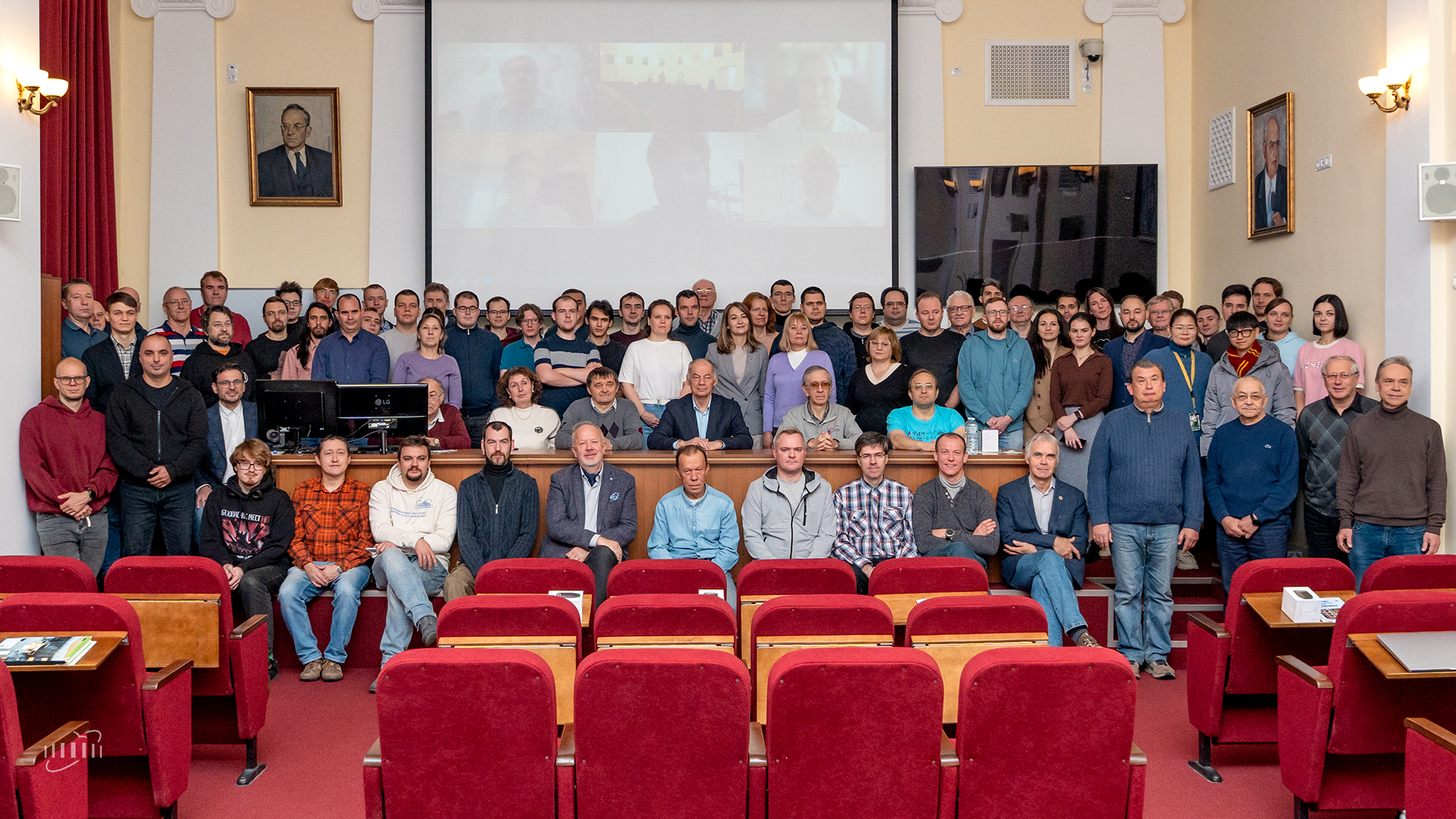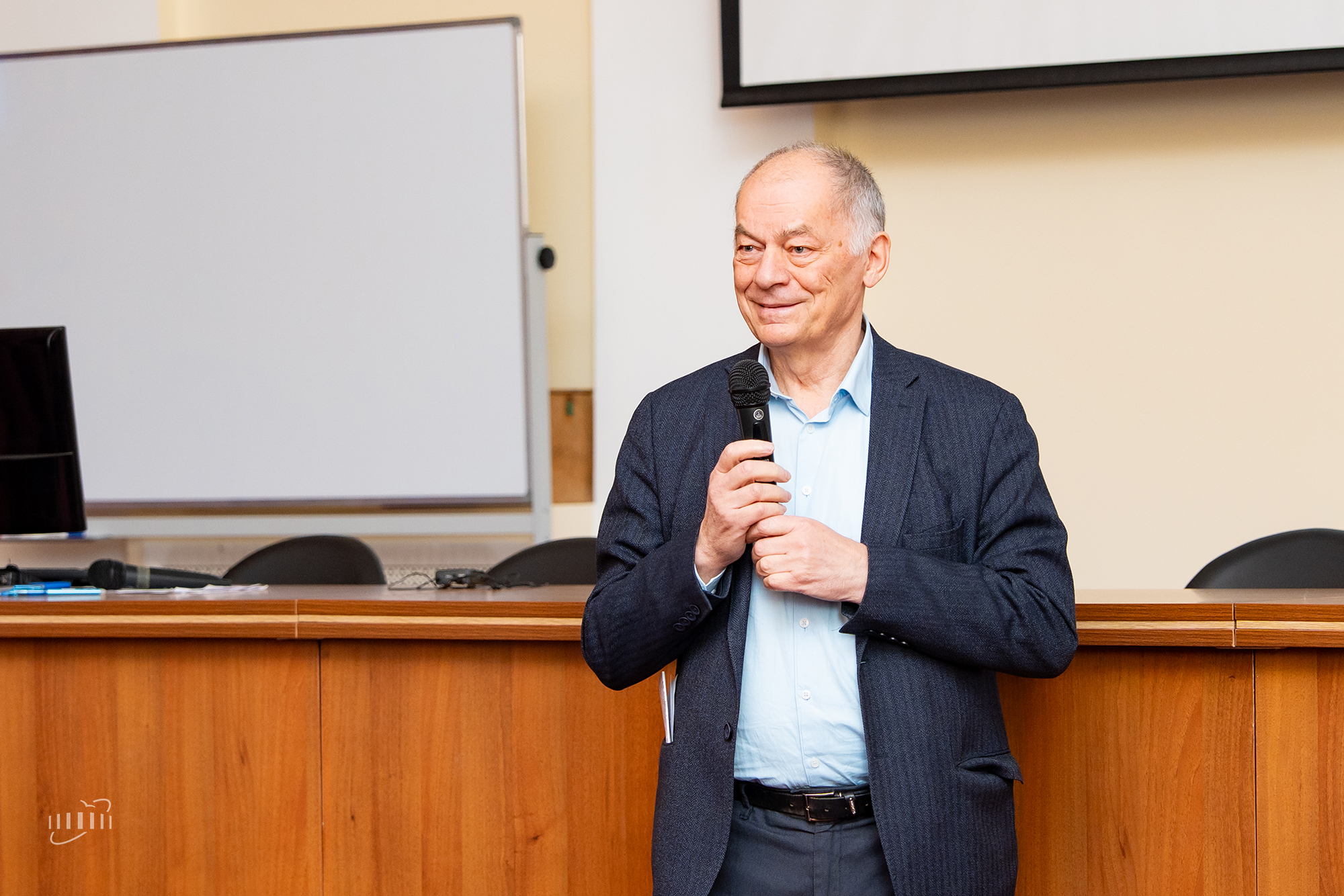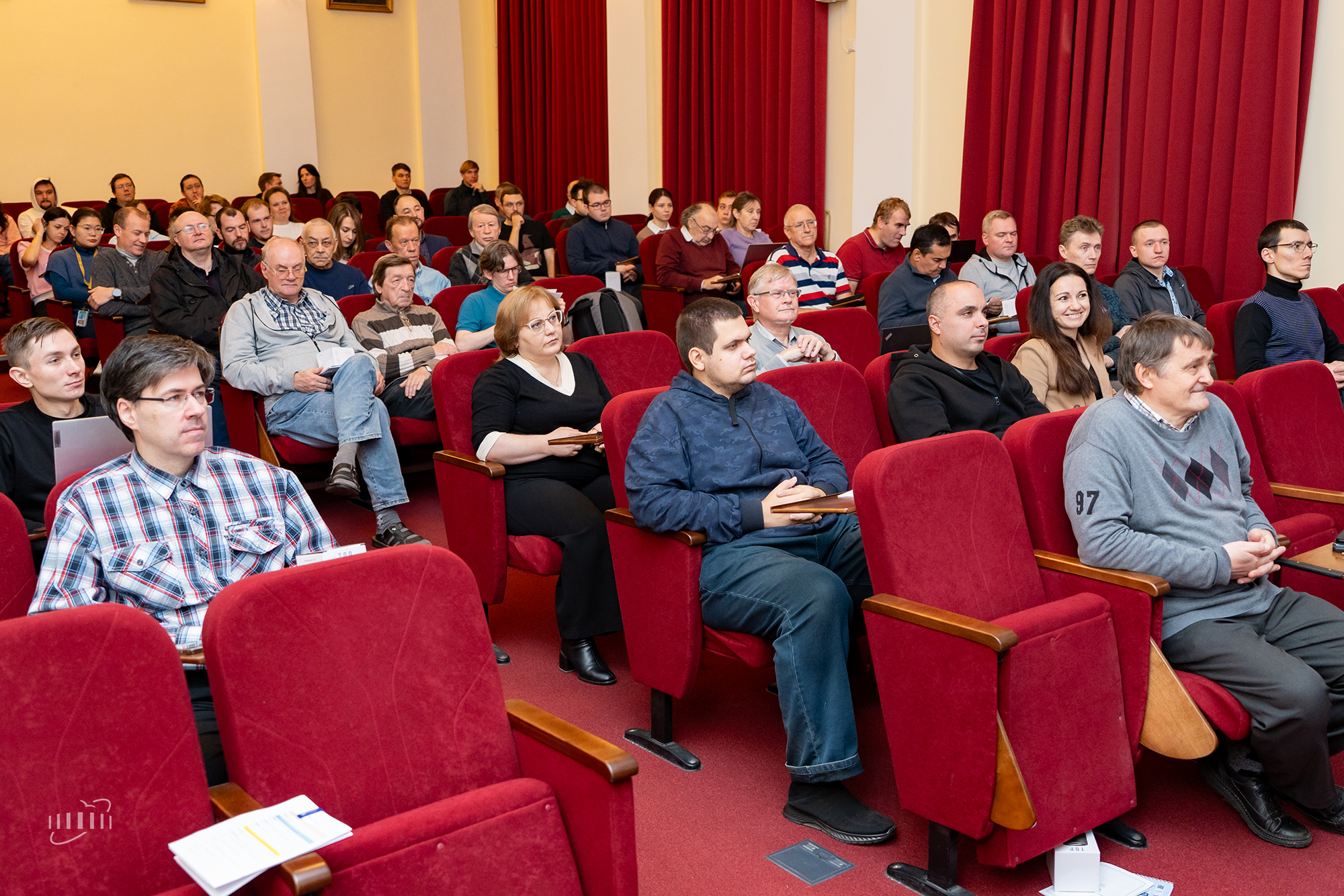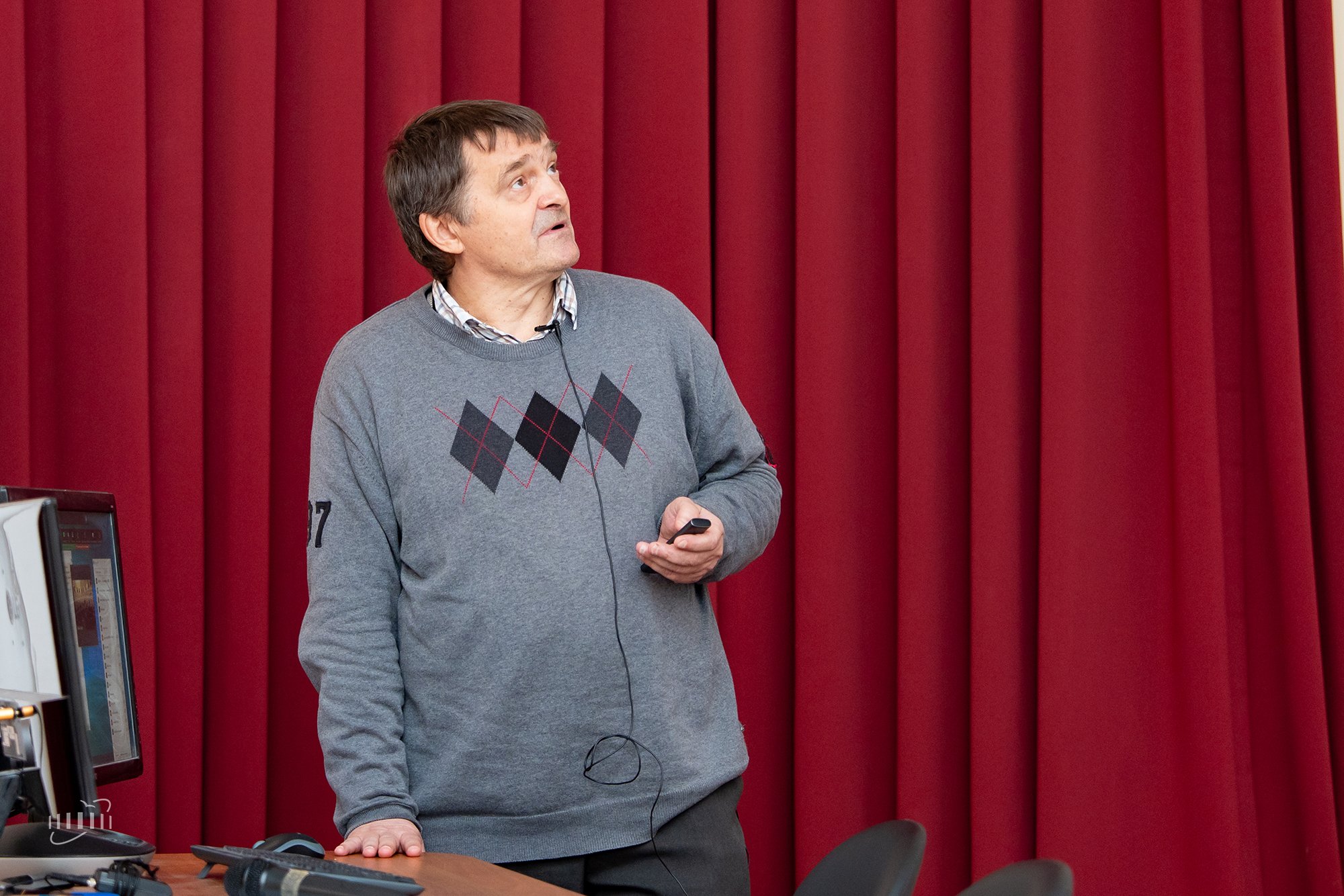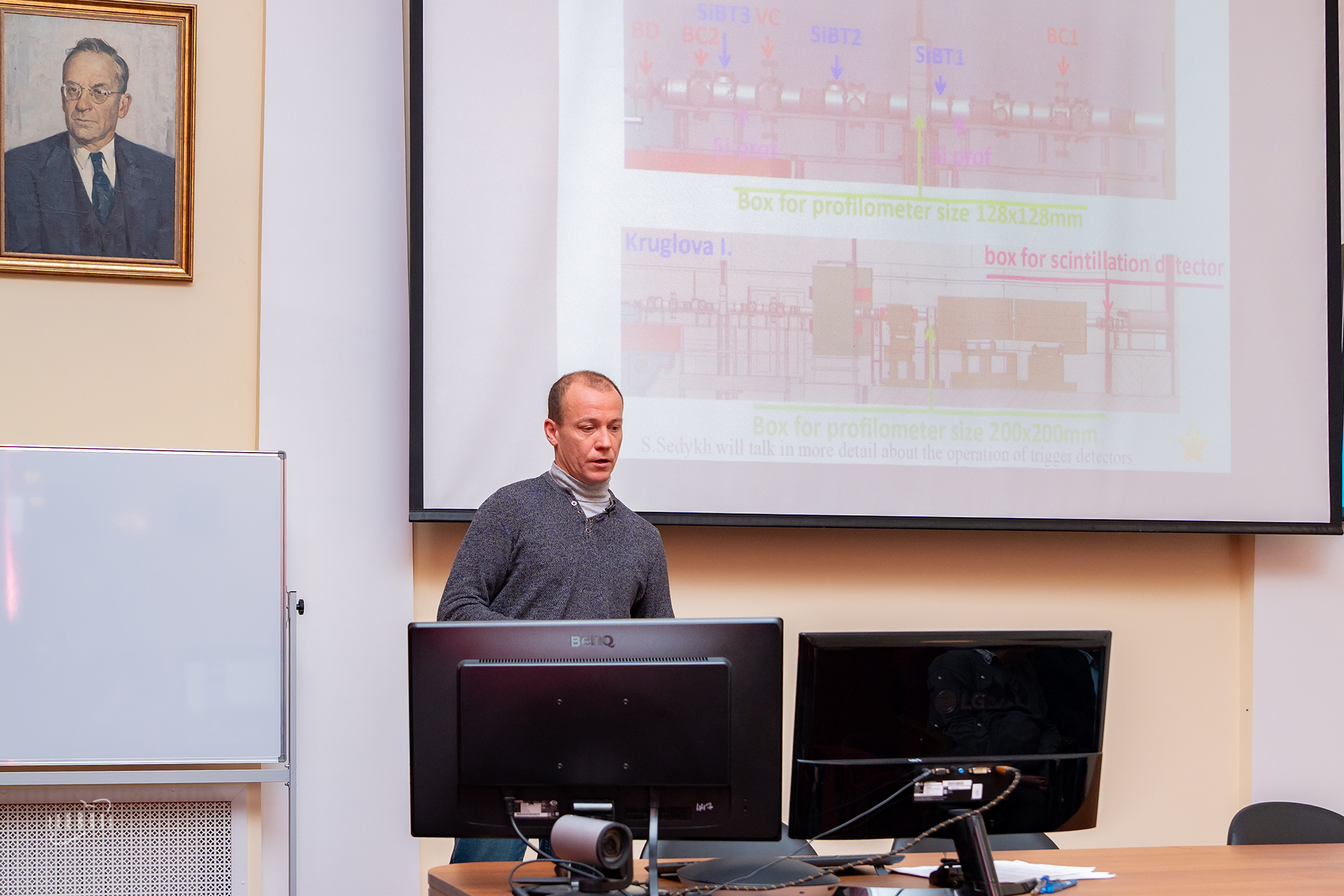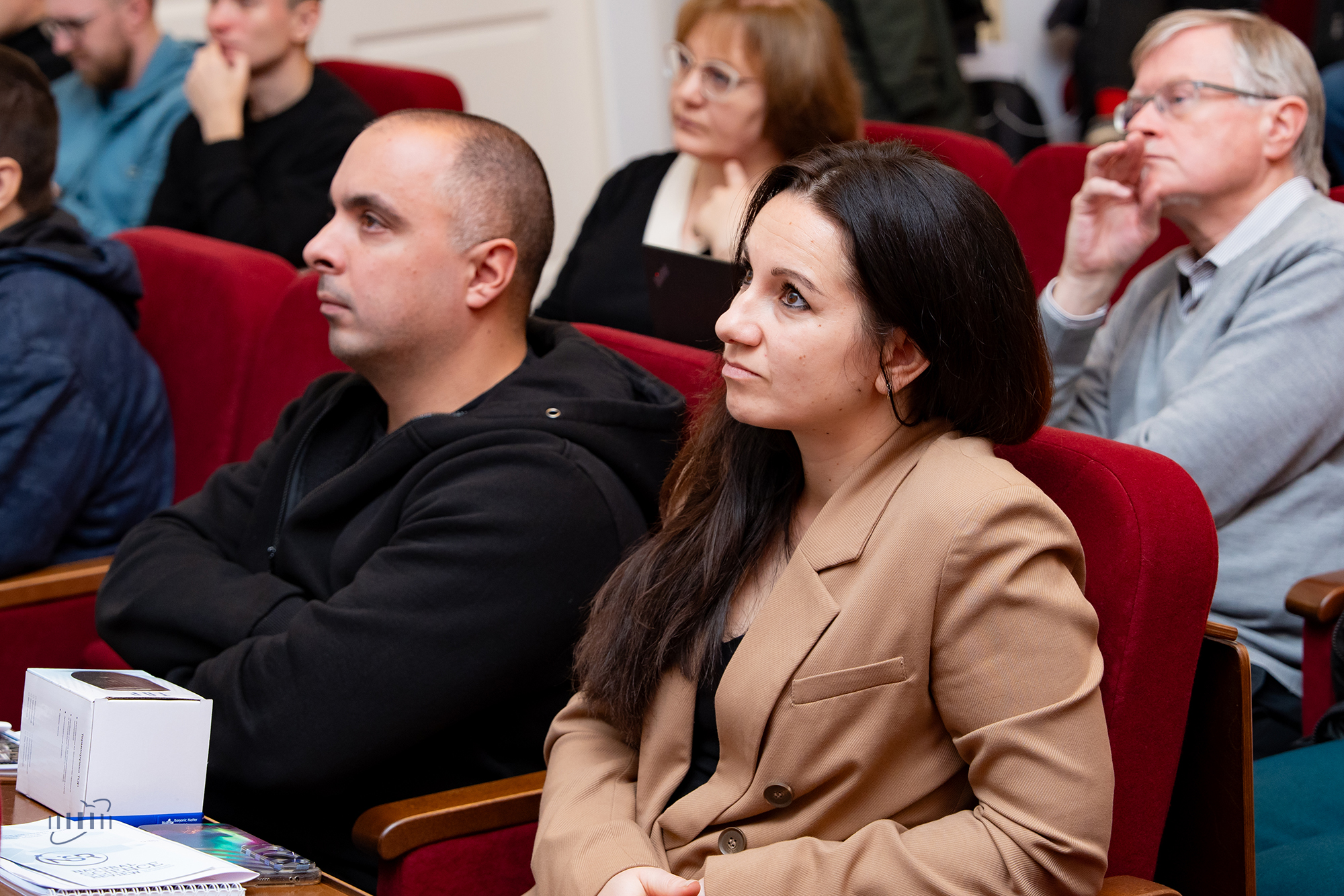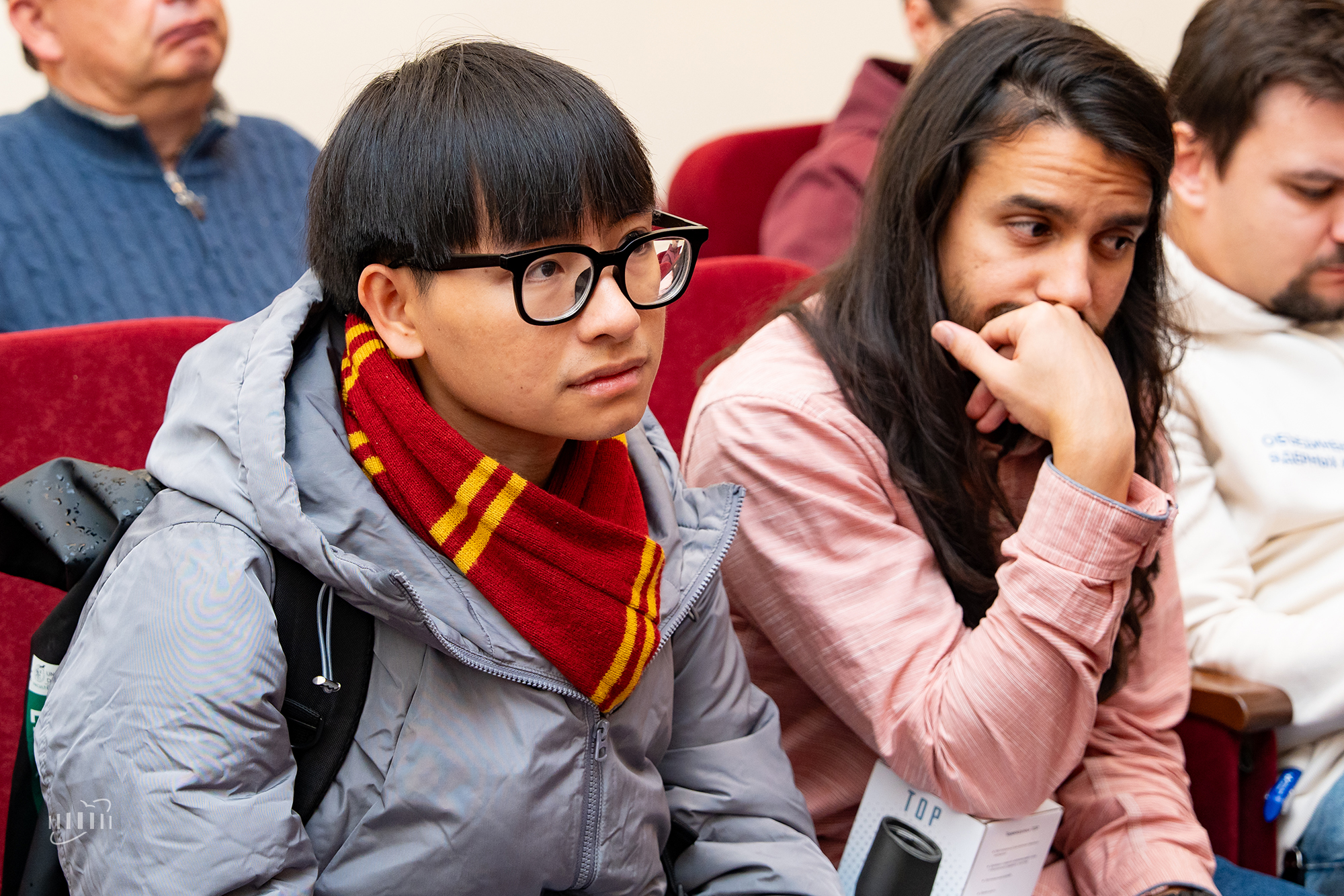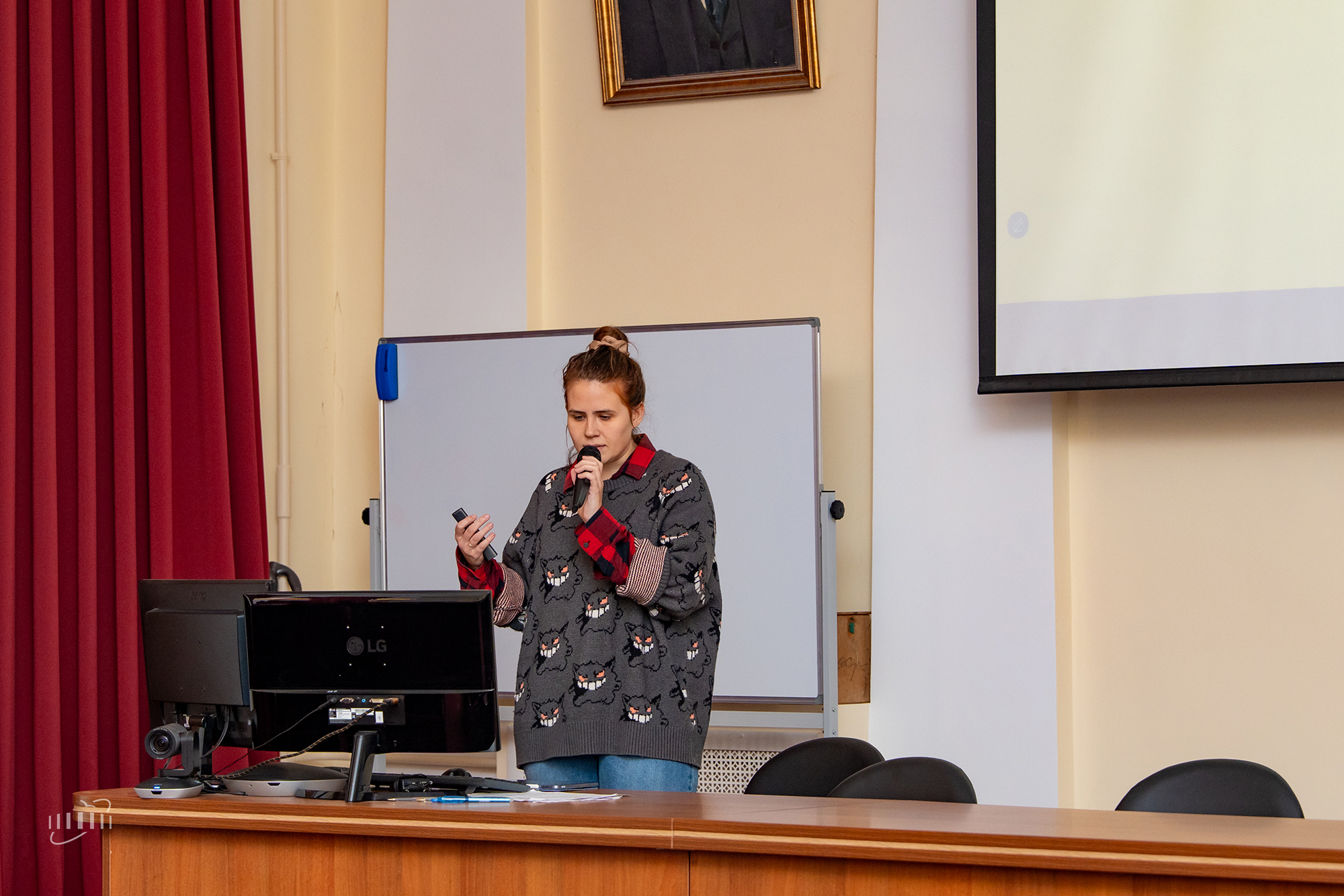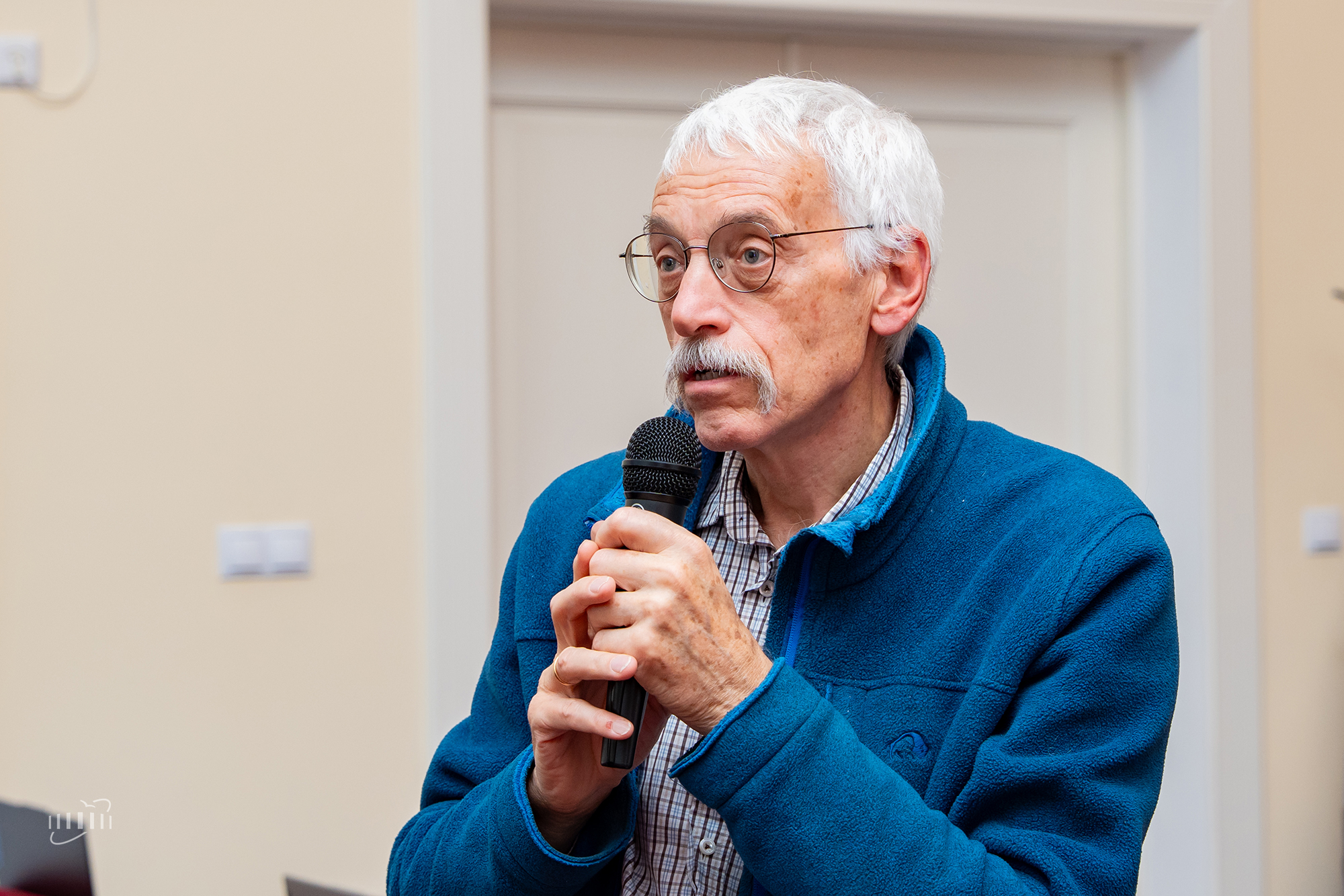BM@N Experiment discussed at VBLHEP at JINR
News, 15 October 2025
The 15th BM@N (Baryonic Matter at Nuclotron) Collaboration Meeting is taking place from 14 to 16 October at the Veksler and Baldin Laboratory of High Energy Physics in a hybrid format. More than 130 specialists are discussing the latest research results of the collaboration and the development prospects of the project in the coming years.
Vice-Director of the Joint Institute for Nuclear Research, Academician of the Russian Academy of Sciences Vladimir Kekelidze gave an opening speech. He congratulated BM@N Collaboration Spokesperson, VBLHEP Chief Researcher Richard Lednicky on his 80th birthday, noting his significant contribution to high energy physics. “Coming from a brilliant scientific school, he is one of the founders of the correlation femtoscopy method, which makes him a true ‘classic scientist,'” the JINR Vice-Director emphasised.
In addition, Vladimir Kekelidze noted that in the seven years since its creation, the BM@N Collaboration has become one of the leaders in hot and dense baryonic matter research. “The BM@N Experiment continues to show convincing results, attracting increasing interest from the global scientific community,” he said.
Head of the VBLHEP JINR Scientific and Experimental Department of Baryonic Matter at Nuclotron Mikhail Kapishin discussed experiments planned to be conducted from 2027 to 2031. One of the main tasks for 2025-2026 is xenon beam energy scan at 3, 2.2, and 1.6 GeV per nucleon. An upgrade of the tracking system is planned for experiments with heavier bismuth ions. In particular, an additional silicon FSD detector station will be installed, a new high-granularity neutron detector will be added for measuring neutron yields and collective flow, and the acceptance of the ToF-400, the time-of-flight system, will be extended to low momenta.
In addition, the speaker discussed the prospects of research with polarised deuteron beams, which will require updating trigger detectors and tracking system elements. Such an upgrade of the facility will open up new opportunities for studying the polarisation of Λ-hyperons and the spin alignment of vector mesons in processes with polarised deuterons. Another important step for the development of the experiment will be a computing infrastructure upgrade. Plans include doubling the processing capacity for the hardware to process up to 2 billion events per physics run and increasing the data storage capacity by 3 petabytes.
Deputy Head of the VBLHEP JINR Scientific and Experimental Department of the Multi-Purpose Detector (MPD) Semyon Piyadin continued the plenary session with an update on the modernisation and installation of the BM@N detector systems. He shared that the facility’s main detecting elements were successfully installed in the experimental pavilion, and the installation of the central tracking system inside BM@N’s analysing magnet finished. In addition, the collaboration’s specialists conducted tests of all magnetic elements, mechanical drives, and the vacuum ion pipe. Semyon Piyadin emphasised that the launch of the fast beam extraction channel from the Nuclotron to NICA‘s collider and the subsequent configuration of the extraction channel channel are necessary conditions for the implementation of the physics programme of the BM@N Experiment.
The first day’s programme included eight talks on data analysis. The scientists discussed the results obtained in previous physics runs. Among the speakers were VBLHEP and MLIT JINR researchers: Ksenia Alishina, Alexander Zinchenko, Nikita Lashmanov, Genis Musulmanbekov, Petr Alekseev, Arkady Taranenko, Irina Zhavoronkova, and Mikhail Mamaev. At an Institutional Board meeting on 14 October, a group of employees from the Institute of Mechanics (IMech) of the Bulgarian Academy of Sciences joined the collaboration.
As part of the second day’s scientific programme, the participants continued to review data analysis results and discussed issues related to the preparation and operation of the detectors of the BM@N Facility. A session on software will take place on the final day, 16 October. In total, the programme of the 15th meeting included more than 40 presentations covering various aspects of the BM@N Project.
